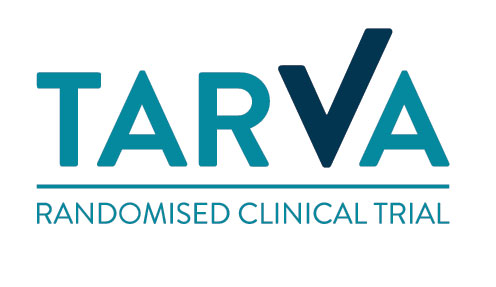Hi, and welcome back to my blog - sorry that it's been a little longer than I intended to add this fourth post, but here goes.
It's just three days to go now before I'm back at the RNOH both for my pre-op assessment, which I'm told should take up to three hours and, the interesting bit, assuming the pre-op is fine, to be "randomised".
Those of you who have either read my earlier posts, or the TARVA website, or both, will know that "randomisation" is not some arcane and painful medical procedure, nor an attempt to make my life temporarily patternless of purposeless, but rather the process by which the RNOH's massive supercomputer performs gigaflops of calculations before deciding whether I am to have a an ankle replacement (TAR) or a fusion (arthrodesis). (Actually I think it's really Deirdre Brooking standing behind the machine flipping a one pound coin, but that would detract from a serious piece of science, and takes away the high-tech gloss ).
It has been very interesting for me to wrestle with this idea - especially for someone who is used to "being in control" - of essentially surrendering to a machine the decision as to which of two significant, but significantly different, surgical procedures I should undergo. Not only did this of course require my dear left ankle (and the body it belongs to) to be capable (physically/technically) of undergoing either procedure, but for me to accept at an intellectual level that I was prepared for a decision either way without my having any influence over that. Of course I have accepted that and, as I pointed out in an earlier blog, I am almost thankful that I don't have to make the decision myself (albeit with excellent input from specialists), since I have researched both procedures endlessly and still - because of the pros and cons of both - find it difficult to decide which would be best for me.
However, the other day, my wife said to me - 'if you were forced to make a decision yourself on one or the other procedure, which would it be', and after some thought I gave her my answer; there is one of the two procedures for which I have the tiniest of preferences. I'm not going to tell you now which it was, but when the decision has been made for me on Friday I will reveal to you what my minute preference was, and what my reaction to the actual decision is at the time.
For the final part of this post, and as promised, I'm going to start to tell you about some of the preparations I've been making for my operation and beyond, and the first of these concerns post-operative mobility, since I shall be non-weight-bearing on my left leg for a number of weeks post-op (precisely how long I understand will be determined by the procedure I have and a number of reviews by my surgeon post-operatively of my progress.
Again, as I've researched through this particular issue, I've concluded that there are actually (at least) three approaches to dealing with the challenges of non-weight-bearing, all of which inevitably have their own pros and cons. They are : crutches - by far the most common and best known; knee-walkers (which seem to be better known in the U.S. than the U.K.); and what I will call a "hands-free crutch" - more of that, and the knee walker, in later posts. Since they all seem to have particular benefits in particular situations, and as I'm a bit of an experimenter, I'm actually probably going to try them all, and hopefully report for others' benefit my own experiences of each of them.
In this post, I'm going to concentrate on the most conventional "solution", which is crutches. I'm going to first look at the crutches I have selected and purchased, and secondly the physical preparations I'm now making for using crutches post-op.
I did a huge amount of research on the subject of crutches, and came to two major conclusions - first, that my selection of crutch was very important, and secondly that I needed to do some physical preparation for when I would be using crutches.
Based on my research, my initial decisions was to go for forearm crutches rather than underarm crutches - the latter seem to result in significant under-arm/upper-arm issues, and are very unwieldy.
So after my research on forearm crutches, I finally decided to opt for smartCRUTCH, which I believe originate from S.Africa. Unlike conventional crutches, these have additional forearm support, thus meaning that your weight is being carried on your forearms as well. They also look very stylish - I bought mine in blue!
As soon as I got them I started to practise, which is when you realise first, that you need a lot of practice, and second that - to make things easy - you need quite a lot of upper-body strength. So I went along to my local gym, joined up for three months, and asked the manager if he could give me a set of exercises specifically to strengthen my upper body for crutches. What a result! The guy had himself broken his ankle some five years ago, and so knew exactly what I was facing. He gave me a series of about 20 exercises designed exactly and precisely to strengthen my (mainly upper) body in anticipation of using crutches - if anyone wants me to share these exercises, please let me know.
So, equipped with the exercises,I shall now be experimenting with the crutches next week, when I return from my pre-op.
To recap, the next post will feature my pre-op and "randomisation", and my reaction to that, plus some initial thoughts on actually using the crutches, and an introduction to the two other non-weight-bearing aids I am looking at - i.e. knee walkers and "hands-free crutches".
Talk to you soon!
David
